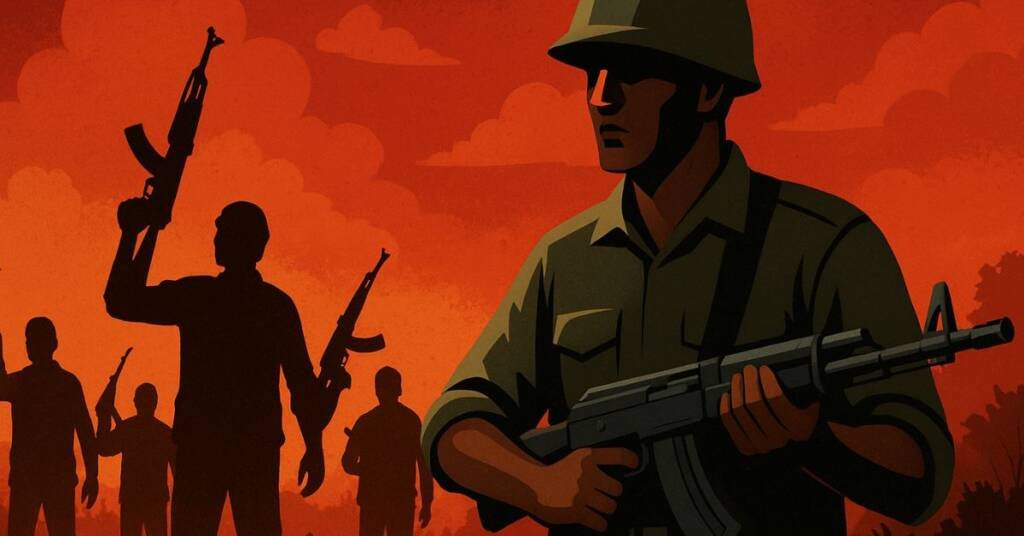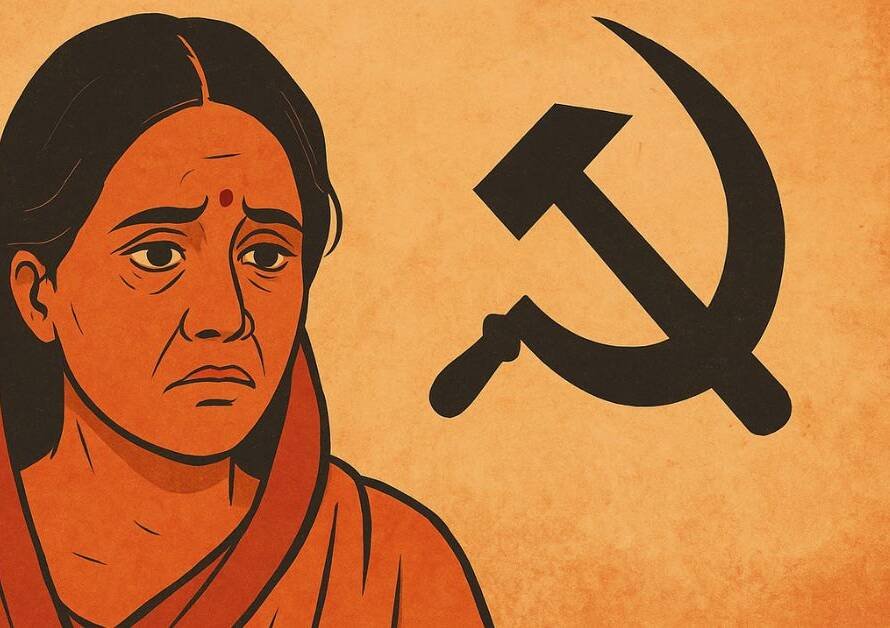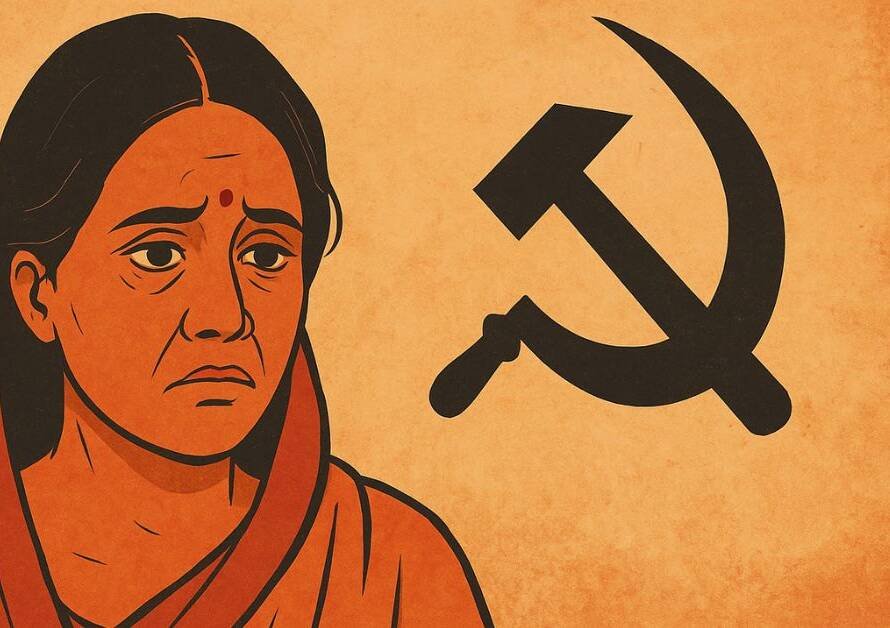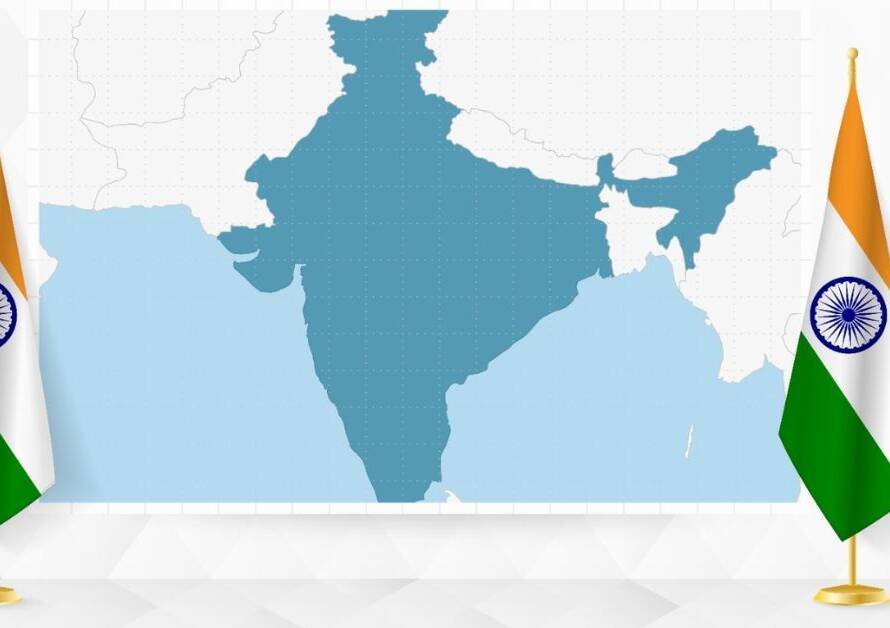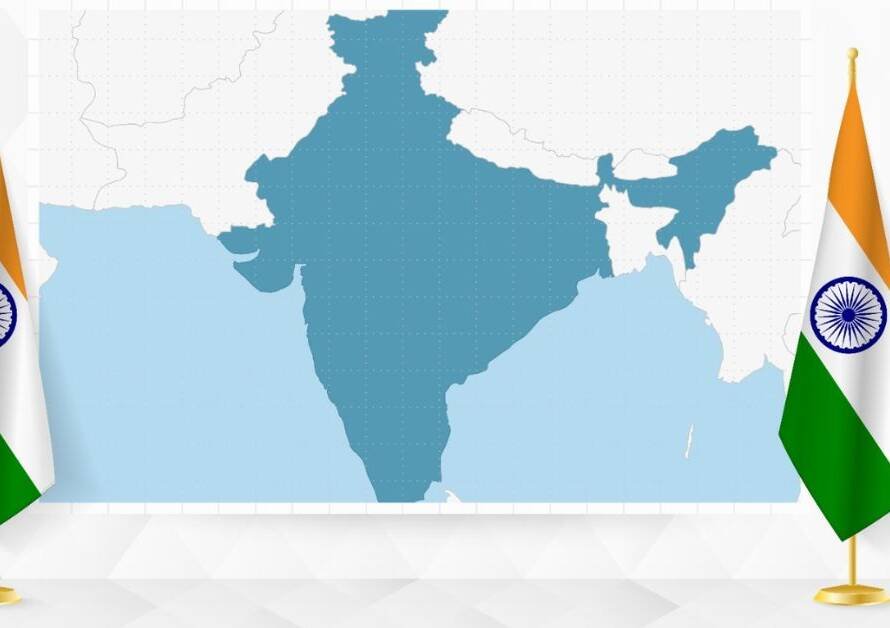How Political Denial and Vote-Bank Politics Deepened India’s Internal War
🩸 1. The Expanding Shadow of Naxalism
- For decades, India has struggled against the violent insurgency of Naxalism — a radical Maoist ideology aimed at overthrowing the Indian state through armed revolution. By the mid-2000s, this had transformed from a regional uprising into one of the country’s gravest internal security threats.
- According to reports from the Ministry of Home Affairs, by 2004–05, the Naxal crisis had spread across 76 districts in nine states, involving over 9,300 armed militants equipped with 6,500 modern weapons. These were not reformists but terrorists waging war against the Republic of India.
- Yet, the Congress-led UPA government refused to acknowledge the seriousness of this threat. At a time when the nation required decisive and unified action, the UPA exhibited apathy, indecision, and policy paralysis.
⚖️ 2. Political Apathy and Vote-Bank Calculations
The Congress government’s attitude towards Naxalism was a mix of denial, negligence, and misplaced sympathy — driven by its obsession with vote-bank politics.
- Congress never took Naxalism seriously because the violence was concentrated in Hindu-majority regions that did not affect its vote-bank.
- In fact, the victims of Naxalism were mostly Hindus, which suited Congress’s political calculus.
- Similarly, Congress ignored Christian missionary conversions because it didn’t affect Muslim votes — and was again targeted against Hindus.
- The Khalistan problem too was ignored, even though it endangered national unity, because it largely impacted Hindus and not their core vote-bank.
Had any of these crises affected their Muslim vote-bank, Congress would have acted swiftly and decisively.
- Across the country, Hindus became the soft targets — their lives, culture, and population continuously under threat.
- This indirectly benefited Congress’s long-term agenda of weakening Hindu society, both numerically and psychologically.
- Meanwhile, Congress kept the nation engaged in distractions and unrest — communal riots, divisive politics, and manufactured controversies — to divert public attention from their loot, corruption, and scams.
Since independence, Congress has consistently betrayed Hindu interests and faith, while appeasing Muslims for vote-bank politics, because hurting Hindus pleases Muslims — a double benefit for Congress.
💣 3. The Deadly Merger – Formation of CPI (Maoist)
In October 2004, a decisive turning point came when two of India’s most violent insurgent groups —
- People’s War Group (PWG) and
- Maoist Communist Centre of India (MCCI)
merged to form the Communist Party of India (Maoist).
- This created a centralized terror network coordinating across multiple states.
- Yet the UPA government failed to respond strategically.
- Naxal incidents in Bihar rose by 29%,
- Fatalities increased by 34%, and
- Jharkhand saw a 44% rise in killings within a year.
When terrorists were uniting and militarizing, the government remained divided and passive.
🕊️ 4. The Trap of “Peace Talks”
In a misplaced show of weakness, the UPA encouraged “peace talks” between state governments and Maoists — especially in Andhra Pradesh.
- The 2004 ceasefire allowed Maoists to regroup, train, recruit, and expand into new territories — Odisha, West Bengal, and Uttar Pradesh.
- When they withdrew from talks in January 2005, they were stronger and better armed.
- Even the CPI(M)-led West Bengal government criticized this as “talking under the gun,” recognizing that Maoists had no interest in peace — only deception.
🧠 5. Not a Poverty Problem — An Ideological War
- Left-leaning intellectuals painted Naxalism as a “revolt of the poor,” but their own manifesto — “Strategy and Tactics of Indian Revolution (2004)” — revealed the truth:
- “The central task of the Indian revolution is the seizure of political power.”
- Their goal was not justice, but civil war — to replace Indian democracy with a communist dictatorship.
Their methods included:
- Executing villagers in fake “people’s courts.”
- Destroying schools, roads, and infrastructure to halt development.
- Attacking police and officials to paralyze administration.
They sought control through terror, not reform.
🌐 6. Cross-Border Links
The Naxal insurgency was never confined within India’s borders. Intelligence reports exposed growing links between Indian Maoists and Nepal’s Communist Party (Maoist) — a banned terror group. This cooperation involved:
- Exchange of weapons and explosives.
- Joint training camps in Jharkhand and Bihar.
- Safe houses in Indian cities like Siliguri and Patna.
It was Nepal’s Maoists who played a vital role in merging PWG and MCCI — creating an international terror front.
⚠️ 7. The Cost of Weak Governance
The Congress-led UPA’s inaction had devastating consequences:
- Thousands of soldiers, policemen, and civilians killed.
- Public infrastructure worth crores destroyed.
- Entire regions of central and eastern India turned lawless.
- Villagers lived under the tyranny of armed insurgents.
Meanwhile, the government’s misplaced sympathy for so-called “revolutionaries” allowed terrorism to spread unchecked.
🔱 8. The Nationalist Turn — A New Era of Action
- Under the current nationalist government, India adopted a two-pronged approach — combining tough security operations with rapid development in Naxal-affected areas.
- Today, roads, schools, and healthcare reach villages once ruled by Maoists.
- Over 400 Maoists have surrendered, and the number of affected districts has fallen from 165 in 2005 to less than 45 today.
The Home Minister has set a clear goal:
- “To completely eliminate Naxalism from India by 2026.”
This government understands that security and development must go hand in hand, but both demand national unity and political will — something Congress lacked.
🧩 9. Lessons for the Nation
The Naxal crisis offers timeless lessons:
- Denying threats doesn’t remove themselves.
- Peace talks without disarmament strengthen terrorists.
- Development without security is impossible.
- Only a strong, nationalist government can preserve India’s unity and sovereignty.
- Hindus must recognize how Congress and its alliance have consistently undermined Hindu interests while appeasing Muslims for political gain.
It is time for nationalists to stand united, support the current government, and help India’s rise into the top 3 global superpowers.
🕉️ From Denial to Determination
- Naxalism was born not from poverty but from ideological extremism
- The Congress-led UPA’s refusal to face this truth plunged India into years of instability.
- In contrast, today’s Bharat understands that peace is not achieved through surrender, but through resolve and strength.
When leadership acts with clarity and courage —
- Terrorists surrender,
- Development accelerates, and
- The nation marches toward enduring peace and prosperity.
🇮🇳 Jai Bharat, Vandematram 🇮🇳
For old Blogs please visit our website www.saveindia108.in
To join our whatsapp Community please click
https://chat.whatsapp.com/FMr2WNIgrUVG9xK78FW5Dl?mode=r_t
To join our Telegram group please Click https://t.me/+T2nsHyG7NA83Yzdl Old Blogs are available on the telegram group also.

